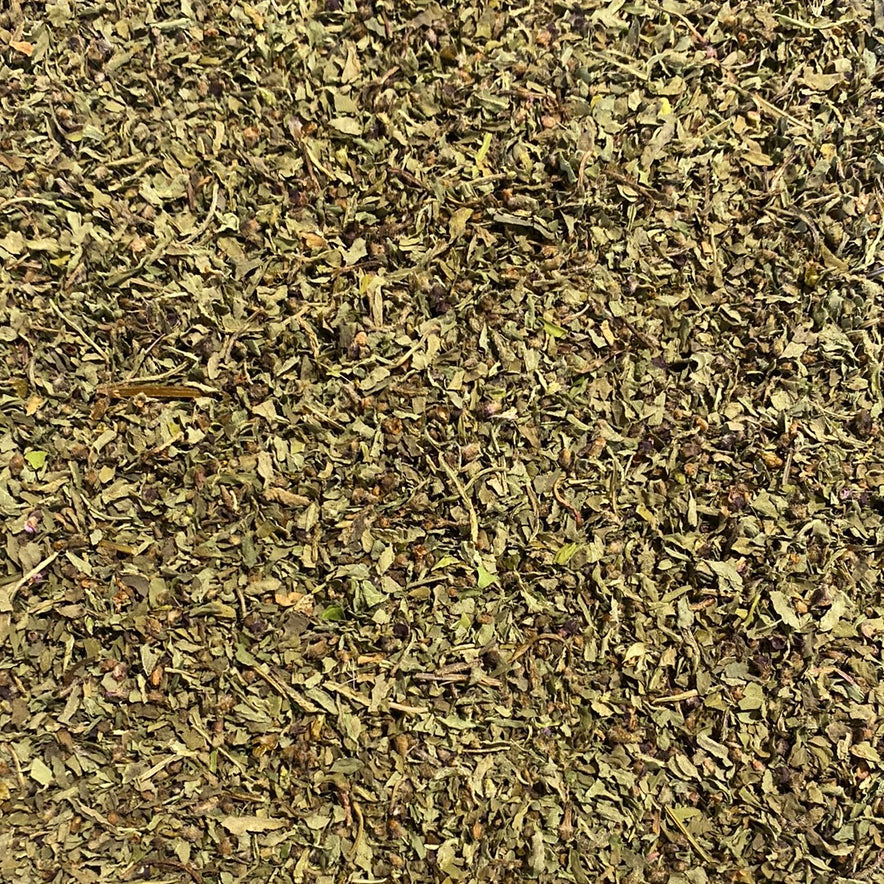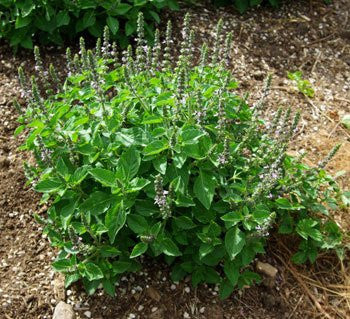

"Kapoor" Tulsi / Holy Basil | Our Biodynamic Cultivation (Ocinum Sactrum)
Kapoor Tulsi or "heavily flowered basil" has garnished its name due to the sweet fragrance that can keep insects and mosquitoes at bay. The use of Kapoor tulsi can help in the treatment of bronchitis, malaria, diarrhea, dysentery, skin disease, arthritis, eye diseases, and insect bites.
Our holy basil is cultivated in the area of Kouses in Botano’s biodynamic garden, and is also known as tulsi, which means “the incomparable one” in Hindu. It is an aromatic shrub thought to have originated in north-central India, where it is one of the most common houseplants.
Tulsi has a long and illustrious history in India, extending back over 3,000 years. In Ayurvedic medicine, it's been used for centuries as an "adaptogen" and therapeutic plant. Because of its anti-stress properties that promote harmony across the entire body, it was once utilized as medicine and is still used today.
Phytonutrients and caryophyllene, a cannabis-like compound, are abundant in this herb rightfully claimed as an "elixir of life." Holy basil has powerful antiviral, antibacterial, and antifungal properties.
Holy basil is well-known for its ability to help maintain homeostasis and combat the effects of stress and adrenal fatigue/dysfunction, as well as helping alleviate symptoms of hypothyroidism, imbalanced blood sugar, acne, and the common cold.
Holy basil also seems to protect the body from chemical stress caused by factors like industrial pollutants, heavy metals, physical stress, and even radiation poisoning, on top of minimizing damage from radiation treatment while keeping hormone levels balanced naturally and helping manage symptoms of anxiety. It is rich in Vitamin K and is considered a natural headache remedy that can help relieve migraine pain due to its ability to relieve inflammation, sinus pressure, and muscular tension by fighting the effects of stress.
Compared to the commonly sold type of “traditional” basil (O. basilicum) that has a sweet taste, holy basil is described as being more peppery, spicy, and also minty. Both types of basil can be cooked, including in fresh or dried forms, but holy basil has therapeutic uses that traditional basil does not. It's commonly used in garnishing foods, sauces, and soups.
Recommended Dosage
◉ 1-3 teaspoons of loose tea (or 3g up to 3 times) daily. If more than one herbal mixture is consumed at the same period of time, reduce the amount of tea accordingly.
◉ When herbs are used for an extended period of time, it is suggested to consume a herbal remedy with a ratio of 3 to 1. For example:
- If you choose to take it for 3 weeks, have a one-week pause.
- If it is taken for a 30-day period, have a 10-day pause.
That does not apply to herbs and fruits that have a laxative effect.
Notes
◉ Herbs and botanicals should be stored in airtight glass containers -in a cool, dark, and dry area- to preserve their flavor and properties.
◉ Before adding a new herbal remedy or supplement to your daily routine, you should consult with a medical doctor or holistic health practitioner.
Herbal Tea Brewing Instructions
- Heat the water to the point where it begins to boil.
- Add 1 teaspoon of loose tea, to a tea infuser or tea bag, for every 180ml - 240ml of water.
- Pour the heated water (right off the boil) over the tea, cover your cup, and steep for 7-10 minutes or longer.
- Add honey or stevia for sweetness, if desired.
Follow these additional steps to make the perfect cup of tea!
